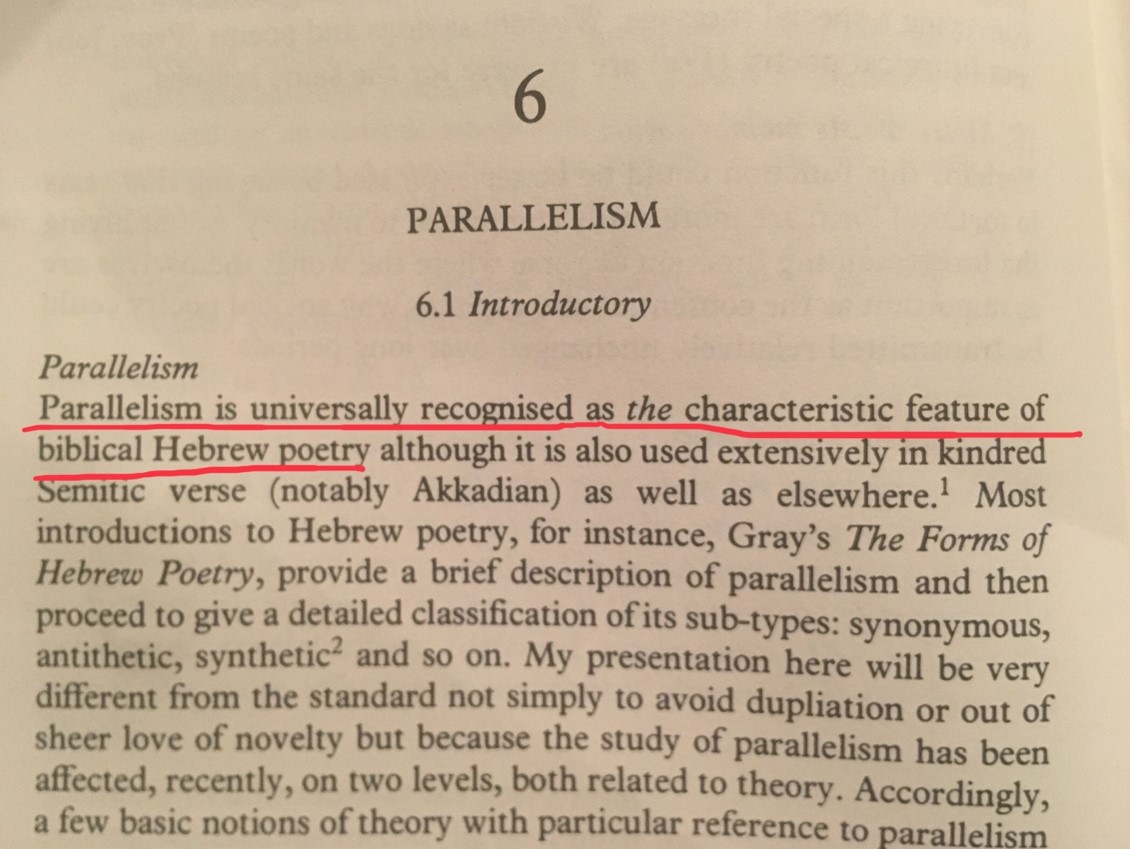Joseph Smith and the Grove Vision
Read more here...
Updated: March 8, 2024
Hebrew Parallelism
What is Parallelism?
Parallelism in Hebrew Writing
In his classic work Classical Hebrew Poetry, A Guide to Its Techniques (1986, p.114) Hebrew Scholar Wilfred Watson states:
"Parallelism is the characteristic feature of Hebrew Writing."

Hebrew Parallelism is THE characteristic literary feature throughout the Book of Mormon.
Unlike English Poetry where words rhyme, in Hebrew writing the 'ideas' rhyme.
Many parallelism types exist in the Book of Mormon. Scholars have categorized over 40 parallelism types and most of these can be found in the Book of Mormon (click Menu).
No "American Book' comes close to the type and sophistication of the Hebrew Poetry as is found in the Book of Mormon.
What are the Introductory/Traditional Parallelism Types?
Hebrew Parallelism is a writing style to emphasizes ideas..
1. Synonymous Parallelism--Similar repeated words emphasize ideas
2. Synthetic Parallelism-Second and third ideas emphasize a point
3. Climactic Parallelism-Ideas expressed conclude with a major or specific point.
4. Emblematic Parallelism-an idea is stated then explained using other words
5. Anthithetical Parallelism-ideas are contrasted by comparison.
6. Chiastic Parallelism-ideas stated in order are repeated in reverse order, the most important point is in the center. (Chiasm comes from Greek letter 'Chi' which is "X". Ideas reflected in and out like an "X.")
All these types about in the Book of Mormon including many subtypes (AB Couplets, Anadiplosis, Janus Parallelism, Hebrewisms like Ellipsis, Metaphors, Rhetorical questions, Cognate Accusative, etc).
While these Parallelism types exist in the Bible, they are extremely evident in the Book of Mormon, sometimes more abaundantly.
Why Does the Book of Mormon have Parallelisms?
Parallel writing teaches important ideas.
Parallelism ephasizes ideas through word arrangement. Parallelisms have been given modern names like "Chiasm, Synonymous, Synthetic, Climactic, Emblematic, etc" but originally, they were simply the way Hebrews wrote when they wanted to emphasize important spiritual ideas.
Emphasizing holiness, God's words are often presented in a Parallelism, and Jesus' words in the Book of Mormon present the longest Chiasm anywhere.
Parallel writing was the signature of deep-thinking Hebrews.
How did we get the Book of Mormon?
Descendants of Joseph left Israel and came to America. Joseph's people were scribes--they kept records on metal plates.
Lehi's family were descendants of Joseph. They Left Jerusalem with records and in America discovered what the ancient prophesies taught: that God would take on flesh and become Jesus, offering salvation for humanity if we repent.
Lehi's people had a varied existence in America: some worshipped Christ while others rebelled. But a portion of them kept records. They passed down an understanding of the original language of the first records (written in 'Paleo Hebrew,' or as the Book of Mormon calls it 'Language of the Egyptians'. Click Here to learn more about the Evolution of Egyptian to Hebrew Language).
This record, maintained in the ancient language, became known to us Gentiles as the Book of Mormon.
God brought this record to the Gentiles so we wouldn't stumble by false doctrines.
That record was discovered in the 1800s and translated by divine intervention into English by a boy named Joseph Smith. This 'gift' to divinely translate from an ancient language was a gift by God, and was the single gift Joseph Smith was given.
The Book of Mormon has been largely discarded by Gentiles, and therefore Gentiles have become largely unaware of Hebrew Parallelism within the Book of Mormon,
Hebrew parallelism study swelled in the 1970's-1990's--well after Joseph Smith's life. Scholars in Joseph Smiths talked little about parallelism. People just weren't aware of its extent.
Book of Mormon parallelisms are abundant. They match definitions provided by scholars who, sometimes struggle to find good examples of certain parallelisms within the Bible.
In other words, if Plagaerism was the goal, the Bible would be a difficult source to draw from, when sometimes clear parallelism examples don't always exist from the Bible.
How do you get clarity from murkiness? How do you create clear Hebraic translations without a pure source and divine interpretation? The translation was and is divine.
The Book of Mormon Parallelism often exceeds Biblical parallelism in quality and purity because the Book of Mormon, unlike the Bible, was not subject to translation errors.
The Book of Mormon abounds with parallelism.
This fact alone refutes criticisms that the Book was 'written' by Joseph Smith or the even sadder accusation, plagiarized.
No books existed in the 1800's (or today) to obtain such high quality Hebrew parallelisms from.
Instead, the Book of Mormon could only come by translation from an ancient Hebrew source.
Click the Menu Button (left) to learn of thousands of Hebrew Parallelisms throughout the Book of Mormon.
